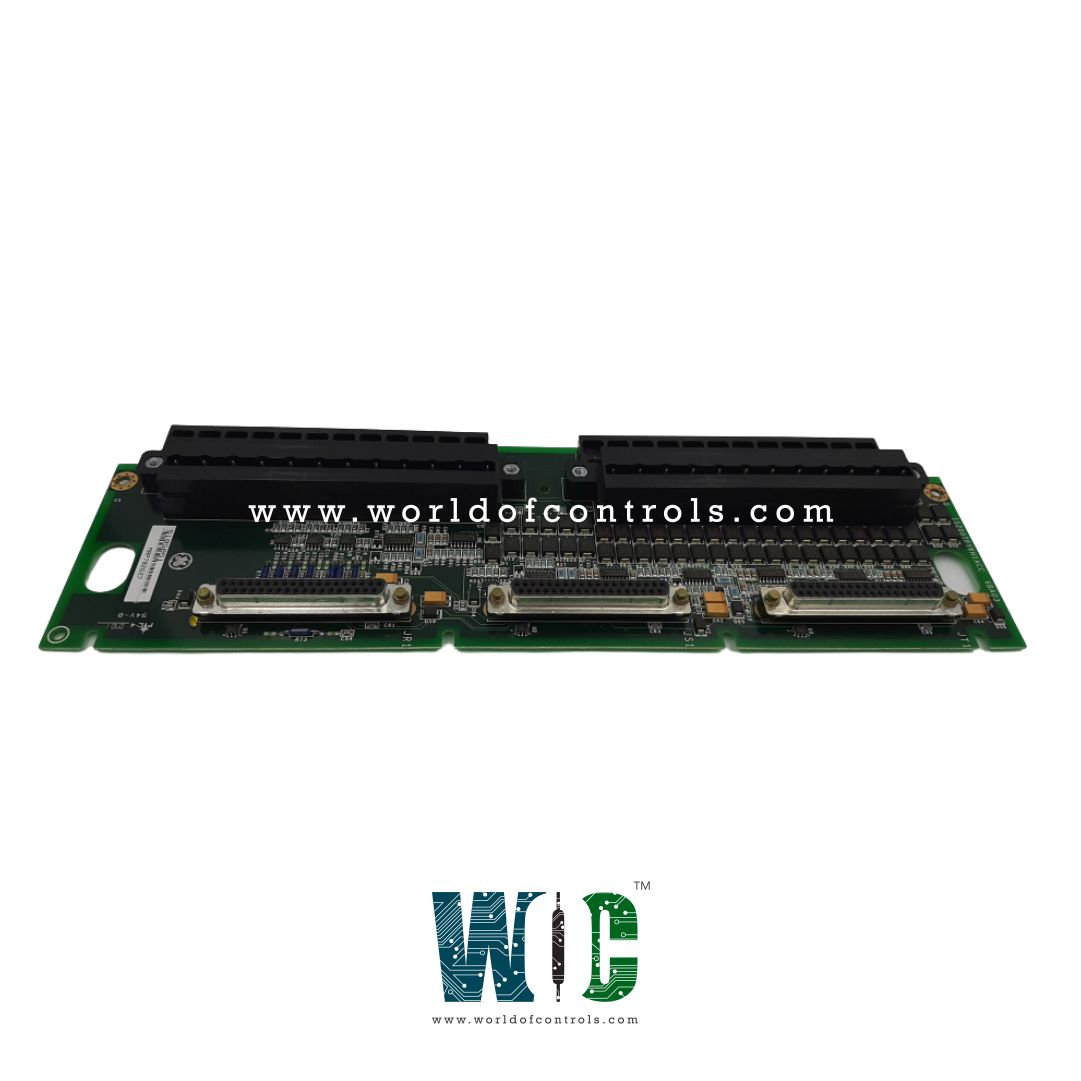
World Of Controls understands the criticality of your requirement and works towards reducing the lead time as much as possible.
IS200TPYRH1ACC - Pyrometer Terminal Board is available in stock which ships the same day.
IS200TPYRH1ACC - Pyrometer Terminal Board comes in UNUSED as well as REBUILT condition.
To avail our best deals for IS200TPYRH1ACC - Pyrometer Terminal Board, contact us and we will get back to you within 24 hours.
SPECIFICATIONS:
Part Number: IS200TPYRH1ACC
Manufacturer: General Electric
Series: Mark VI
Product Type: Pyrometer Input Terminal Board
Number of Input: 2
Current inputs from Pyrometers: 4-20 mA
Input Span: 1-5 V dc
Technology: Surface Mount
Maximum Lead Resistance: 15Ω
Analog output current: 0-20 mA
Operating temperature: -30 to 65 °C
Size: 10.16 cm wide x 33.02 cm high
Repair: 3-7 Day
Availability: In Stock
Country of Origin: United States
Manual: GEH-6721M
FUNCTIONAL DESCRIPTION:
IS200TPYRH1ACC is a Pyrometer Terminal Board manufactured and designed by General Electric as part of the Mark VI Series used in GE Speedtronic Control Systems. The Pyrometer terminal board (TPYR) is wired to two infrared TBTMS thermometers, known as pyrometers, and to two keyPhasor proximitor probes for shaft reference. The resulting 10 voltage signals are cabled to the VPYR board, which samples them at up to 200,000 samples per second. The terminal board has simplex and TMR capability as shown in the following figure. There are three DC-37 connectors on TPYR for connection to the I/O boards. Connections may be simple on a single connector (JR1), or TMR using all three connectors. Connections may be through cables or directly to the I/O Packs. In TMR applications the input signals are fanned to the three connectors for the R, S, and T controls.
INSTALLATION:
The signal inputs are wired directly to two removable I/O terminal blocks. Each block is held down with two screws and has 24 terminals accepting up to #12 AWG wires. A shield termination strip attached to the chassis ground is located immediately to the left of each terminal block. The two optical pyrometers are wired to the first terminal block, and the two KeyPhasor probes are wired to the second terminal block. 28 V dc power for the sensors comes in from the I/O boards through the JR1, JS1, and JT1 connectors.
OPTICAL PYROMETER MEASUREMENTS:
Two infrared pyrometers dynamically measure the temperature profile of the rotating turbine blades. Each pyrometer is powered by a +24 V dc and a –24 V dc source, a diode selected on TPYR from voltages supplied by the three VPYRs. Four 4-20 mA signals are returned from each pyrometer, representing the following blade measurements:
Each 4-20 mA input generates a voltage across a resistor. The signal is sent to VPYR where it is multiplexed and converted. VPYR can be configured for different numbers of turbine buckets, with up to 30 temperature samples per bucket.
WOC has the largest stock of OEM replacement parts for GE Speedtronic Gas Turbine Control Systems. We can also repair your faulty boards and supply unused and rebuilt boards backed up with a warranty. Our team of experts is available round the clock to support your OEM needs. Our team of experts at WOC is happy to assist you with any of your automation requirements. For pricing and availability on parts and repairs, kindly contact our team by phone or email.
What is the function of the key phasor probes in the system?
The keyPhasor probes are utilized to provide shaft position reference in the system. Two keyPhasor probes are employed, with one serving as a backup.
How do keyPhasor probes operate?
KeyPhasor probes, along with associated circuitry, function similarly to those used with TVIB/VVIB. They detect a shaft keyway or pedestal, offering a precise time stamp for blade identification, thereby providing an angle reference.
Why are two keyphrases used, and how are they configured?
Two keyPhasor probes are used to provide redundancy and ensure reliable shaft position sensing. In this setup, one keyPhasor probe functions as the main reference, while the other serves as a backup, increasing the overall system's robustness.